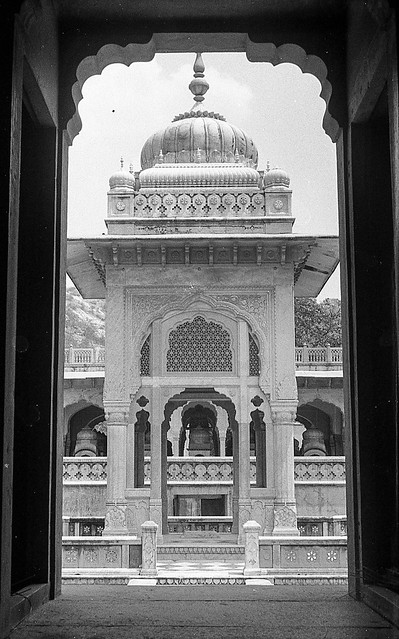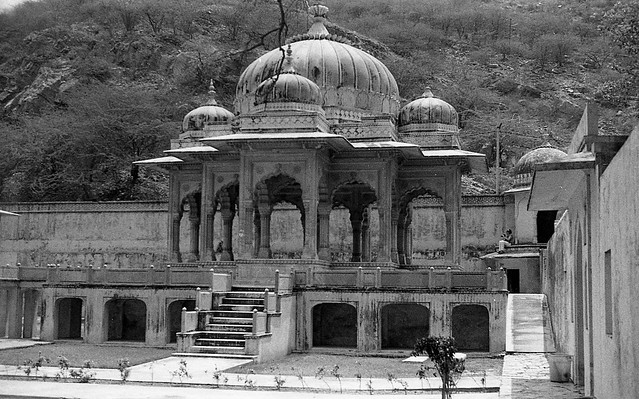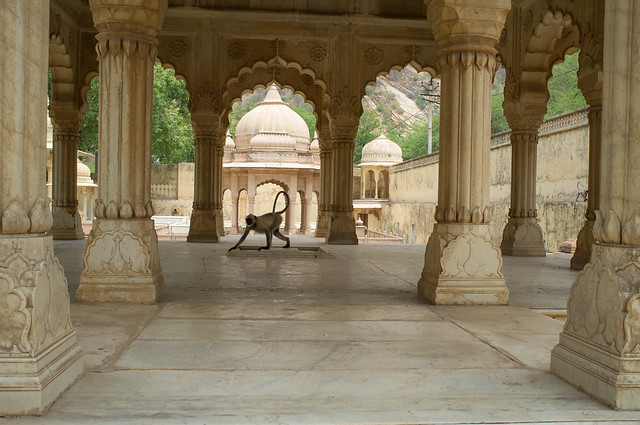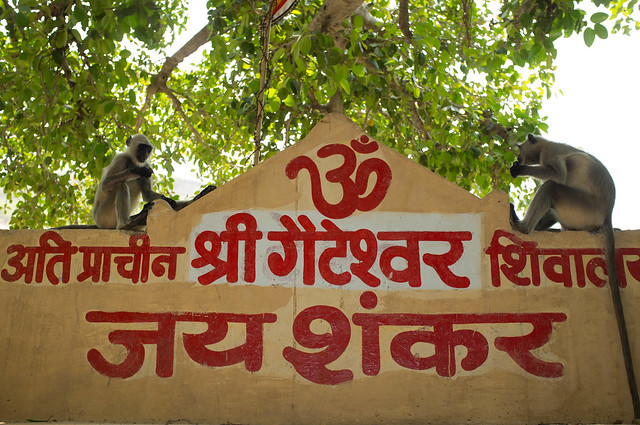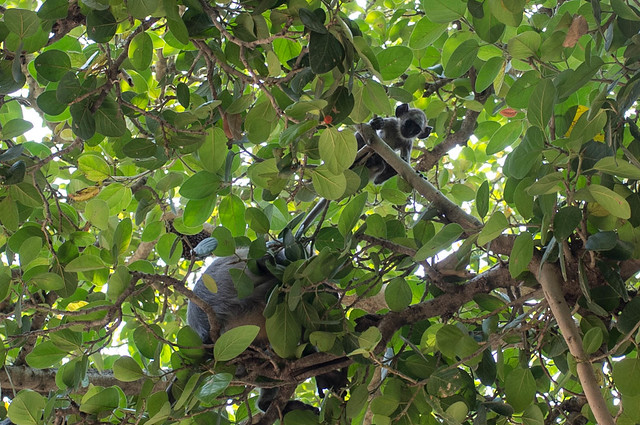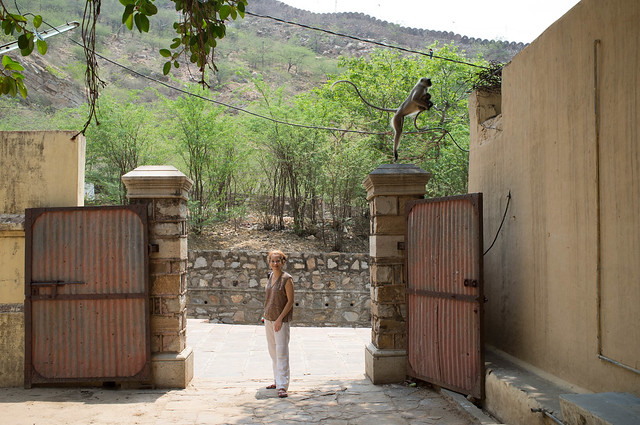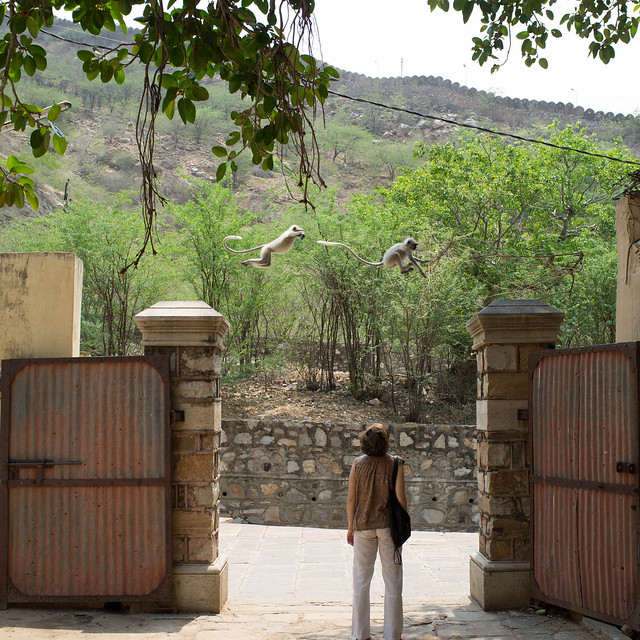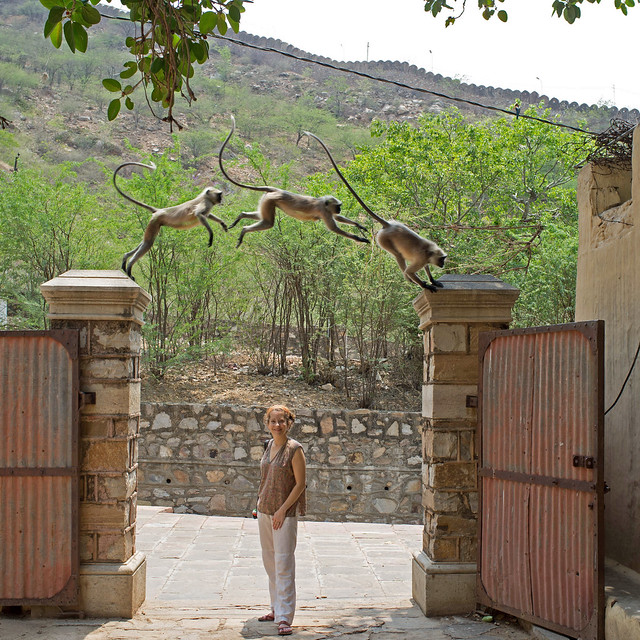With only a month or so before we leave India, we finally made it to Rajasthan, the country’s largest state, located on the northwestern border with Pakistan, and home to the inhospitable Thar Desert. Literally translated as the “land of kings”, Rajasthan could easily be the destination for a half dozen or more individual trips – but as we are rapidly running out of time, we opted for the city of Jaipur.
Jaipur has a rich history and architecture, a number of forts…but those of you who know my dear wife, it’s “Jaipur blah blah blah blah MONKEYS blah blah.” OK I am kidding there – our first day we actually set out to see some of the monuments and forts, and the monkeys were just pure good luck.
We told the cab driver to take us to Nahargarh Fort, which provides an impressive view of the city and is also worth seeing for its own sake. So he drives us across town and we end up at a walled-in area, with stairs leading up the mountain to the right, where there is a temple with a giant swastika painted on the side, and broken stairs leading up to the left, toward some sort of fort-like turrets. Meanwhile, the temperature is in the high 80s (“feels like” 101 Fahrenheit), so we opted to go toward the walled area rather than heading up the stairs.
A guy at the entrance asks us for 50 rupees each (a little less than a dollar) and we oblige. No one else is around, and despite asking three times, the name the guy keeps assigning to the place we’re at doesn’t ring any bells. It turns out later that we were at the Royal Gaitor, supposedly the cremation-place and/or cenotaphs for the past kings of Jaipur and/or the surrounding region. (Don’t know what a cenotaph is? Neither did I. It’s a tomb for someone who’s actually interred somewhere else.)
We walk around the place – only a gardener is there watering the plants, and another guy shows up whose job it is to scrape away and sweep up pigeon poop. Lots of intricately carved marble structures (cenotaphs!) and a tree that apparently has some religious significance, based on the Hindu idols that have been left at its base. All very nice and impressive, something fun to photograph with my black-and-white film camera.
But that’s when we realize a troop of grey langurs is moving into the area. They greet us at the sign leading to the rear area of the attraction.
They appear to be moving in from the hills, and in ones and twos, make their way along the wall surrounding the area, to the giant tree in front of the central temple. We look up and a little one is peering down at us through the branches.
As we walk through the interior gate, we realize they are all jumping across the ten-foot span between the pillars, and it seems like a great place to do some high-speed photography to catch them in mid-air.
So we wait. Eventually I got a series of mid-air shots, and I decided to combine them. For each photo, all the monkeys are the same monkey, recorded at a slightly later point in time. Extra points if you can spot the kingfisher, double if you can identify the type!
We never did end up seeing Nahargarh Fort. Unless you count seeing it from the center of town. It was about 2 km away. We walked up the first 100 or so steps toward the temple to take the photo you saw at the start of this post, and then walked into town soaked with sweat as the mercury continued to climb. We did end up seeing some other forts, on different days. But that will be a different blog post.


